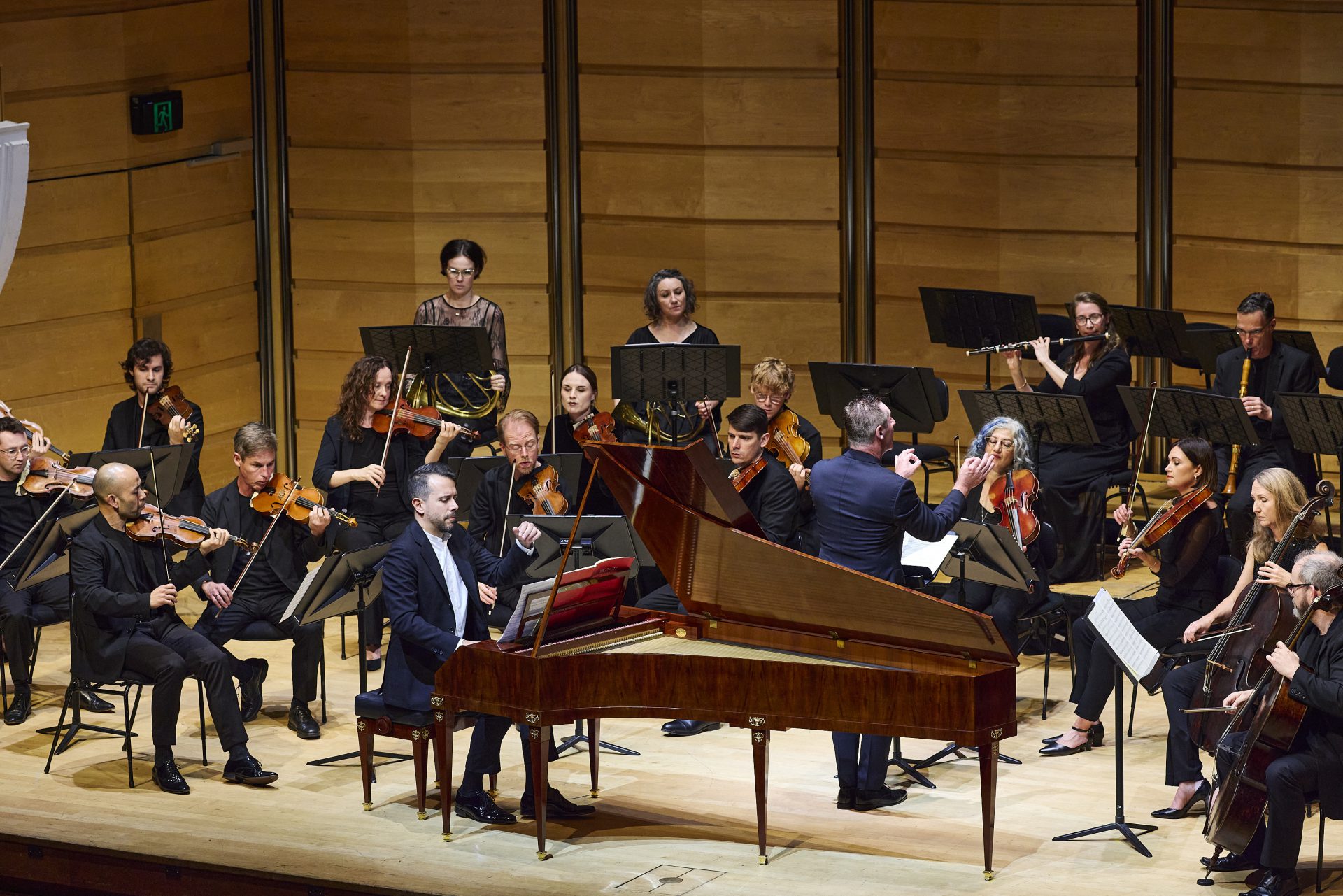This concert was a celebration of Mozart. It was a celebration that featured two of Mozart’s masterpieces – Piano Concerto No 23 and the ‘Jupiter’ Symphony.
But first was the overture to Mozart’s The Marriage of Figaro. The orchestra began with a whispered hush, with a build-up that was like the swarming of bees. Paul Dyer invested his characteristic energy into the piece, but he never let the strings overpower. All this energy was mediated by a strong wind section.
Then enters harpsichordist Francesco Corti from Italy. In this performance he assumed the role of fortepianist, on a copy of Mozart’s fortepiano from the 18th century. It is fitting that Mozart’s Piano Concert No 23 came straight after; the piece was completed only a month or so after the premiere of The Marriage of Figaro. This piano concert is ‘Classical’ in the true sense – it aspires to beauty through balance, moderation and proportion.
Like much of Mozart, the first movement makes for easy listening. The instrumental introduction is light, sprightly and easy to follow. Corti’s entry on fortepiano was delicate and restrained. That is not to say that he did not make the most of the instrument. In some of the more virtuosic cadenzas, he played fortissimo on the bass, accentuating the distinctive silvery buzz of the fortepiano.
The second movement is in a lilting Siciliano rhythm. Cast in F# minor, it has an almost Gothic beauty. Given the sparsity of some of the passages, Corti experimented tastefully with ornamentation. But he did not stray too far.
The third movement is the most energetic. But that did not change Corti’s restrained, Classical, approach to the piece. Mercifully, Corti spares us the modern obsession with overt articulation in historically-informed keyboard performances. He let the piece speak for itself, without letting its voice labour under heavy thought. Yet it seemed at times that the motion of each keyboard solo was perpetual and unrelenting. Too many notes, as Joseph II would have it.
The so-called ‘Jupiter’ Symphony begins thunderously, much like the beginning of Don Giovanni and of most Haydn symphonies. But while Haydn had trouble continuing with the exclamation mark he started off with, Mozart despatches his facility for invention and variety. And by variety, I mean no less than a dozen themes. The orchestra did extremely well in bringing out the grandeur of the opening. The thunderous key change that comes after a long pause is always a moment to behold. It was performed to great effect.
But through all this, the most distinctive achievement was the orchestra’s ability to move so comfortably between loud and soft, serious and whimsical, forceful and lyrical – and feel at home in each.
